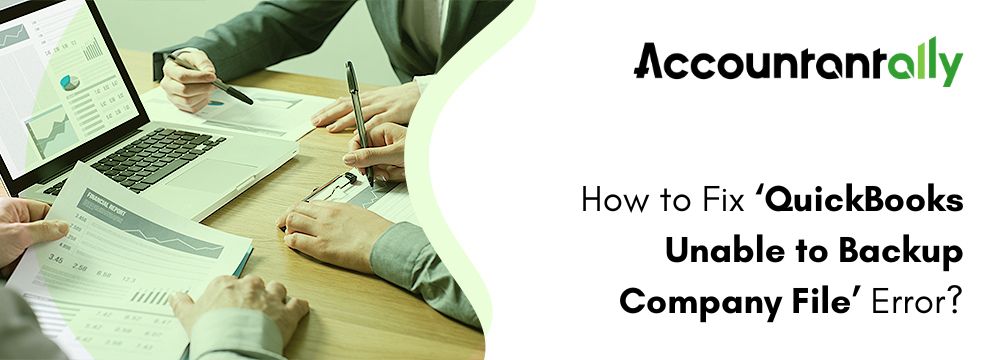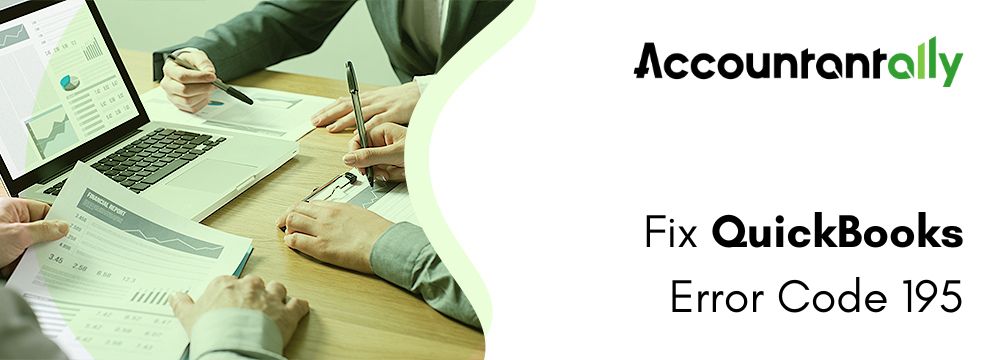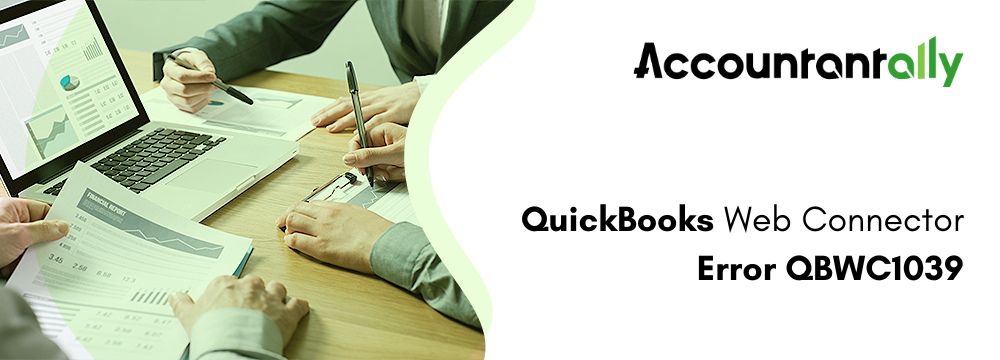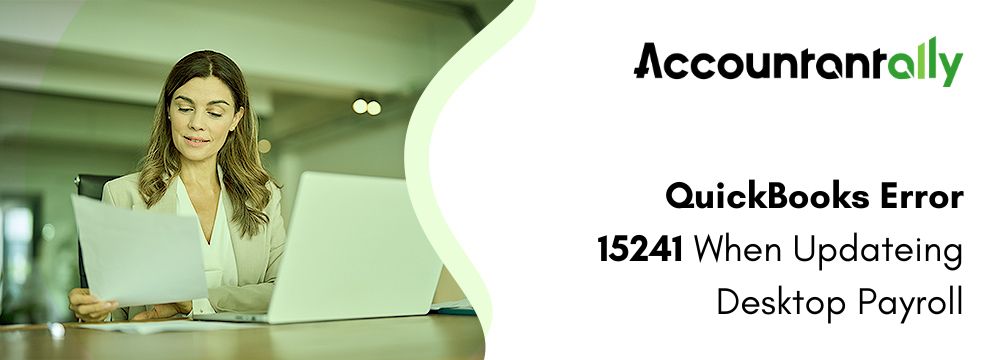This article helps you to understand the causes of the “QuickBooks unable to back up Company File” error. Also, it will outline the specific steps you need to take to correct the issue. Another option is to attempt to extract data from a backup file (QBB) using a QuickBooks repair program.
When you attempt to use the software’s backup features to backup company files (.QBW) data, the error “QuickBooks unable to back up company files” shows on the QuickBooks desktop. There are several other reasons for this problem, such as corrupted QBW files and damaged ND files.
One of the most important assets for any company is data. Regular backups of company data guarantee business continuity, reduce downtime, and help in the prevention of data loss.
All of the business information and transaction details are kept on local storage in company files (.QBW) by QuickBooks, a superior accounting program. Because of this, data from QuickBooks may be lost as a result of hardware failure or software bugs. It is therefore important to regularly backup QBW files.
One feature of QuickBooks is the ability to back up company files to an external or internal device. If the company files are accidentally deleted or become corrupted, this enables you to restore them with just a few clicks.
To create a backup of your QuickBooks company files on a regular basis, you can also automate the process.
However, there are situations when taking a QuickBooks backup can result in errors like,
- QuickBooks is unable to backup company file
- Backup failed
What are the reasons for QuickBooks Backup Errors?
The following causes of the “QuickBooks Unable to Backup Company File” problem could be present:
- Corrupt Company (.QBW) file
- If the company file is more than the 65- 65-character limit
- Damaged Network Data (.ND) file
- When the company backup file exceeds the 3 GB size limit.
- During the backup process QuickBooks files are used by another program.
- Backup storage media is not connected
- In QuickBooks settings wrong backup path.
What are the steps to Resolve ‘QuickBooks Unable to Backup Company File’ Error
The ways to fix the QuickBooks unable to back up company file error on a Windows computer are listed below.
Step 1: Run a malware/virus scan
Using any trusted antivirus or anti-malware program, thoroughly check your computer for malware or viruses. If malware or virus infection is the reason for the QuickBooks backup problem, this step is important.
Step 2: Upgrade the QuickBooks program
Reinstalling QuickBooks software might be necessary if the backup problem doesn’t go away. That isn’t the best option though, since you’ll have to redo the whole QuickBooks® setup process.
Also, you could look for software upgrades. Updating QuickBooks may also resolve the QuickBooks cannot backup company file problems.
To verify and install the updates,
- Begin by opening QuickBooks software, then go to Help and then you have to go to Update QuickBooks.
- Now you have to click on Update Now.
- To download the updates, you have to choose the ones that are available, then click the Get Updates button.
- Now you have to restart the software. You will be prompted to update; select Install or Yes to proceed with the installation routine
- Restart the system after the updates have been installed.
- Try backing up your data by opening the software.QBW company files
Step 3: Verify the Backup Path
- If the backup path is faulty or unavailable, QuickBooks might not be able to backup the company file. Before starting the backup task, make sure the backup location disk or directory is checked. If there is a backup directory on an external drive, make sure the drive is securely attached to the computer. Follow the steps to check:8
- To save the backup company files, navigate to QuickBooks®’ Preferences and select the backup directory or path.
- Make sure the path is legitimate and reachable by verifying it.
Step 4: Check and Rename the Company File (.QBW)
There shouldn’t be any special characters in the QBW file name. Additionally, the name should contain no more than 65 characters.
NOTE: After changing the company file, rebuild the loan manager information if you use QuickBooks Loan Manager.
- Navigate to C:\Users\Public\Public Documents\ Intuit\QuickBooks\ in your company’s file location. Check the file name there. Right-click the file and select Rename.
- Take off any extra or unusual characters from the file name. The company file might be renamed as well.
- Then you have to press Enter.
Try backing up your QuickBooks data now.
Step 5: Rename Network Data (.ND) File
A company file cannot be backed up if the.ND file is corrupted or you have relocated the .QBW file to a different location on the PC without changing the associated .ND file while the upgrade is happening.
- Navigate to C:\Users\Public\Public Documents\ Intuit\QuickBooks\ using Windows File Explorer.
- Your company file and the.ND file share the same name.ND acronym
- Select “Rename” with a right-click on the.ND file.
- To save, add.old to the end of the file name extension and hit “Enter.”
- Move the.QBW file to a new location, then copy and paste the.ND file to the old location.
- Return to the QuickBooks backup menu and attempt to create another backup of the company file.
Step 6: Use QuickBooks® Rebuild Data Utility
To rebuild company files QuickBooks has an option. Rebuilding the company file data can fix the most of problems, including “Backup Failed” or “QuickBooks unable to back up company file.”
To rebuild company files in QuickBooks software, follow these steps:
- Go to File, then go to Utilities and then you have to click on Rebuild Data.
- If a request to backup the company file displays then you have to click OK.
- After a little while, click OK to see the “Rebuild has completed” message appears.
To check whether the rebuild was successful, select File>Utilities>Verify Data after it has finished. Then you have to try to back up the company files once again.
Use Accountantally Repair for QuickBooks Software if the backup error is not resolved by these methods.
The program can help resolve the issue with the company file and export a freshly fixed copy of the .QBW company file to the location of your choice. It is the most advanced QuickBooks repair solution available, capable of precisely fixing severely corrupted or damaged QBW files. It can also recover data from QuickBooks Backup file.
Conclusion.
The ‘QuickBooks Unable to Backup Company File’ error can disrupt your workflow and compromise the safety of your financial data. By following troubleshooting steps such as verifying file paths, ensuring adequate storage, updating QuickBooks, and checking folder permissions, you can resolve the issue efficiently. Regular backups are crucial for safeguarding your company’s financial information, so addressing this error promptly ensures your data remains secure and protected.
Also Read: QuickBooks Error 1712 When Installing QuickBooks for Desktop
Frequently Asked Question
Q1: What causes the ‘QuickBooks Unable to Backup Company File’ error?
A1: This error typically occurs due to insufficient storage space, incorrect file path configuration, damaged company files, or insufficient folder permissions in QuickBooks.
Q2: How do I resolve this error if there is insufficient storage space?
A2: Free up space on your storage device or choose a different location with more available space for the backup. Ensure your backup file path leads to a destination with adequate storage.
Q3: Can file path issues cause the backup error?
A3: Yes, if the file path is too long or leads to a restricted folder, QuickBooks may encounter problems backing up the file. Check the file path and ensure it directs to an accessible location.
Q4: How can I fix the backup issue related to folder permissions?
A4: Verify that the folder where you’re saving the backup has the appropriate read/write permissions. You may need to adjust the folder settings to allow QuickBooks access.
Q5: Can damaged company files cause the backup error?
A5: Yes, a corrupted or damaged company file can lead to backup errors. Use the QuickBooks Verify and Rebuild Data tool to repair the file before attempting the backup again.






